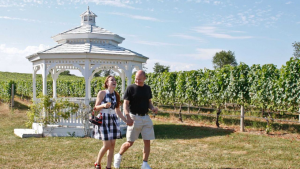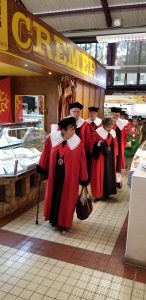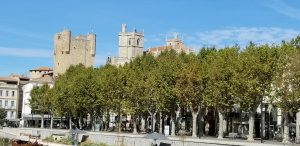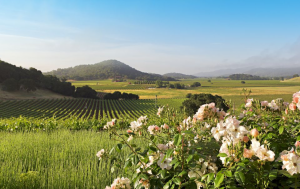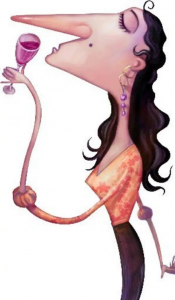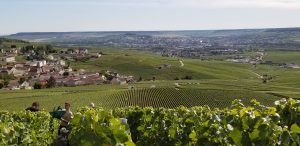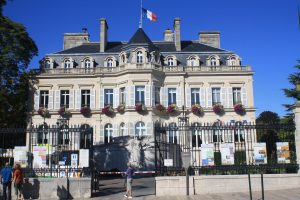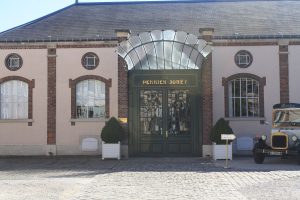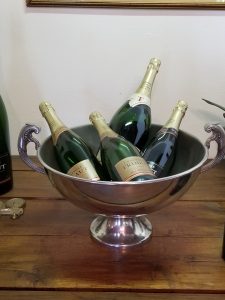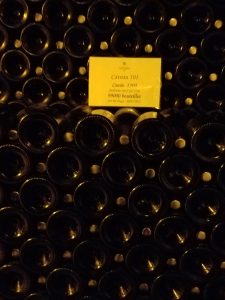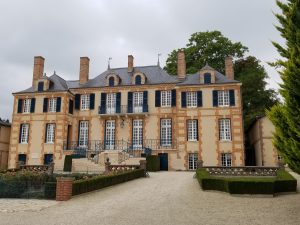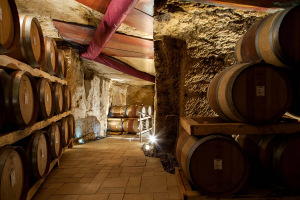Wine tasting in New York’s Long Island is just like tasting anywhere else in Wine Country, except that almost anywhere else there is a long tradition of winemaking. But Long Island’s North Fork has only been producing wine since 1973, when Alex and Louisa Hargrave opened their namesake winery. Today, their son Zander is the winemaker at Pellegrini, so you might say their vines have roots.
The tasting room is a handsome place, with exposed wooden beams and a balcony overlooking the main room. The tasting room lets out onto a colonnaded atrium with the working winery occupying two other sides, with the fourth opening to the road. Some of Pellegrini’s vineyards (they have others elsewhere in the North Fork) are to the rear. The total impression is that of a prosperous Northeastern farm whose owners hired an architect with a sense of place and tradition.
 The tasting room at Pellegrini. Photo courtesy of liwines.
The tasting room at Pellegrini. Photo courtesy of liwines.
You can stand at the bar and sip your wines or take them to a table (which for some reason calls for an extra charge) where you can sit and spend a while. In fact, the whole atmosphere at Pellegrini is more like going over to a friend’s house for a few glasses, rather than walking into a commercial establishment.
One of Pellegrini’s strengths is the wide variety of wines available to sample. It is also one of their weaknesses. On our most recent visit, there were sixteen wines to choose among: six whites, seven reds and a rosé, plus two library wines. It is very hard for vineyards anywhere to produce so many different grapes, with quality, and Pellegrini does not succeed with all of them. (We find this a problem with many Long Island wineries.) So choose among them wisely. One of the advantages of standing at the bar is that you can ask the server to describe each wine before selecting.
Their tastings are limited to three or four glasses, both as a matter of prudence and to control the crowds on summer weekends. If you visit most other times, especially out of season, the servers are not so punctilious; they’ll keep pouring as long as you look like you’re not over-indulging. You can also buy wines by the glass.
One of the advantages of tasting at Pellegrini, in our opinion, is that it is all about wine. There are no rock concerts, food trucks or picnics. You come there for tasting the local product and that’s all.
The gazebo at Pellegrini Vineyards. Photo courtesy of Newsday.
Well, not exactly all. As with many Long Island vineyards, Pellegrini is the venue for many weddings. The beauty of the winery and its atrium layout lend themselves to festive occasions. Moreover, there is a gazebo nestled in the vineyard that has long been an attraction at this winery. Whether you’re there for a wedding or not, it’s a pleasure to amble among the vines towards the gazebo, a North Fork landmark.
